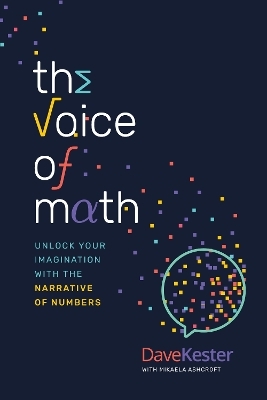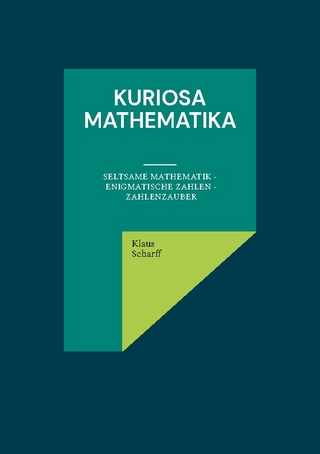
Lectures on the Arthur-Selberg Trace Formula
Seiten
1996
American Mathematical Society (Verlag)
978-0-8218-0571-8 (ISBN)
American Mathematical Society (Verlag)
978-0-8218-0571-8 (ISBN)
- Titel ist leider vergriffen;
keine Neuauflage - Artikel merken
The Arthur-Selberg trace formula is an equality between two kinds of traces: the geometric terms given by the conjugacy classes of a group and the spectral terms given by the induced representations. This book gives proof of Arthur's trace formula of the 1970s and 1980s, with special attention given to $GL$(2).
The Arthur-Selberg trace formula is an equality between two kinds of traces: the geometric terms given by the conjugacy classes of a group and the spectral terms given by the induced representations. In general, these terms require a truncation in order to converge, which leads to an equality of truncated kernels. The formulas are difficult in general and even the case of $GL$(2) is nontrivial. The book gives proof of Arthur's trace formula of the 1970s and 1980s, with special attention given to $GL$(2). The problem is that when the truncated terms converge, they are also shown to be polynomial in the truncation variable and expressed as 'weighted' orbital and 'weighted' characters. In some important cases the trace formula takes on a simple form over $G$. The author gives some examples of this, and also some examples of Jacquet's relative trace formula.This work offers for the first time a simultaneous treatment of a general group with the case of $GL$(2). It also treats the trace formula with the example of Jacquet's relative formula. It discusses why the terms of the geometric and spectral type must be truncated, and why the resulting truncations are polynomials in the truncation of value $T$. It brings into play the significant tool of ($G, M$) families and how the theory of Paley-Weiner is applied. It explains why the truncation formula reduces to a simple formula involving only the elliptic terms on the geometric sides with the representations appearing cuspidally on the spectral side (applies to Tamagawa numbers). It outlines Jacquet's trace formula and shows how it works for $GL$(2).
The Arthur-Selberg trace formula is an equality between two kinds of traces: the geometric terms given by the conjugacy classes of a group and the spectral terms given by the induced representations. In general, these terms require a truncation in order to converge, which leads to an equality of truncated kernels. The formulas are difficult in general and even the case of $GL$(2) is nontrivial. The book gives proof of Arthur's trace formula of the 1970s and 1980s, with special attention given to $GL$(2). The problem is that when the truncated terms converge, they are also shown to be polynomial in the truncation variable and expressed as 'weighted' orbital and 'weighted' characters. In some important cases the trace formula takes on a simple form over $G$. The author gives some examples of this, and also some examples of Jacquet's relative trace formula.This work offers for the first time a simultaneous treatment of a general group with the case of $GL$(2). It also treats the trace formula with the example of Jacquet's relative formula. It discusses why the terms of the geometric and spectral type must be truncated, and why the resulting truncations are polynomials in the truncation of value $T$. It brings into play the significant tool of ($G, M$) families and how the theory of Paley-Weiner is applied. It explains why the truncation formula reduces to a simple formula involving only the elliptic terms on the geometric sides with the representations appearing cuspidally on the spectral side (applies to Tamagawa numbers). It outlines Jacquet's trace formula and shows how it works for $GL$(2).
Introduction to the trace formula (Lecture I) Arthur's modified kernels. I: The geometric terms (Lecture II) Arthur's modified kernels. II: The spectral terms (Lecture III) More explicit forms of the trace formula (Lecture IV) Simple forms of the trace formula (Lecture V) Applications of the trace formula (Lecture VI) $(G,M)$-families and the spectral $J_{/chi}$(f) (Lecture VII) Jacquet's relative trace formula (Lecture VIII) Applications of Paley-Wiener, and concluding remarks (Lecture IX) References.
| Erscheint lt. Verlag | 30.8.1996 |
|---|---|
| Reihe/Serie | University Lecture Series |
| Verlagsort | Providence |
| Sprache | englisch |
| Gewicht | 218 g |
| Themenwelt | Mathematik / Informatik ► Mathematik ► Arithmetik / Zahlentheorie |
| ISBN-10 | 0-8218-0571-1 / 0821805711 |
| ISBN-13 | 978-0-8218-0571-8 / 9780821805718 |
| Zustand | Neuware |
| Haben Sie eine Frage zum Produkt? |
Mehr entdecken
aus dem Bereich
aus dem Bereich
Sieben ausgewählte Themenstellungen
Buch | Softcover (2024)
De Gruyter Oldenbourg (Verlag)
64,95 €
unlock your imagination with the narrative of numbers
Buch | Softcover (2024)
Advantage Media Group (Verlag)
19,90 €
Seltsame Mathematik - Enigmatische Zahlen - Zahlenzauber
Buch | Softcover (2024)
BoD – Books on Demand (Verlag)
20,00 €


